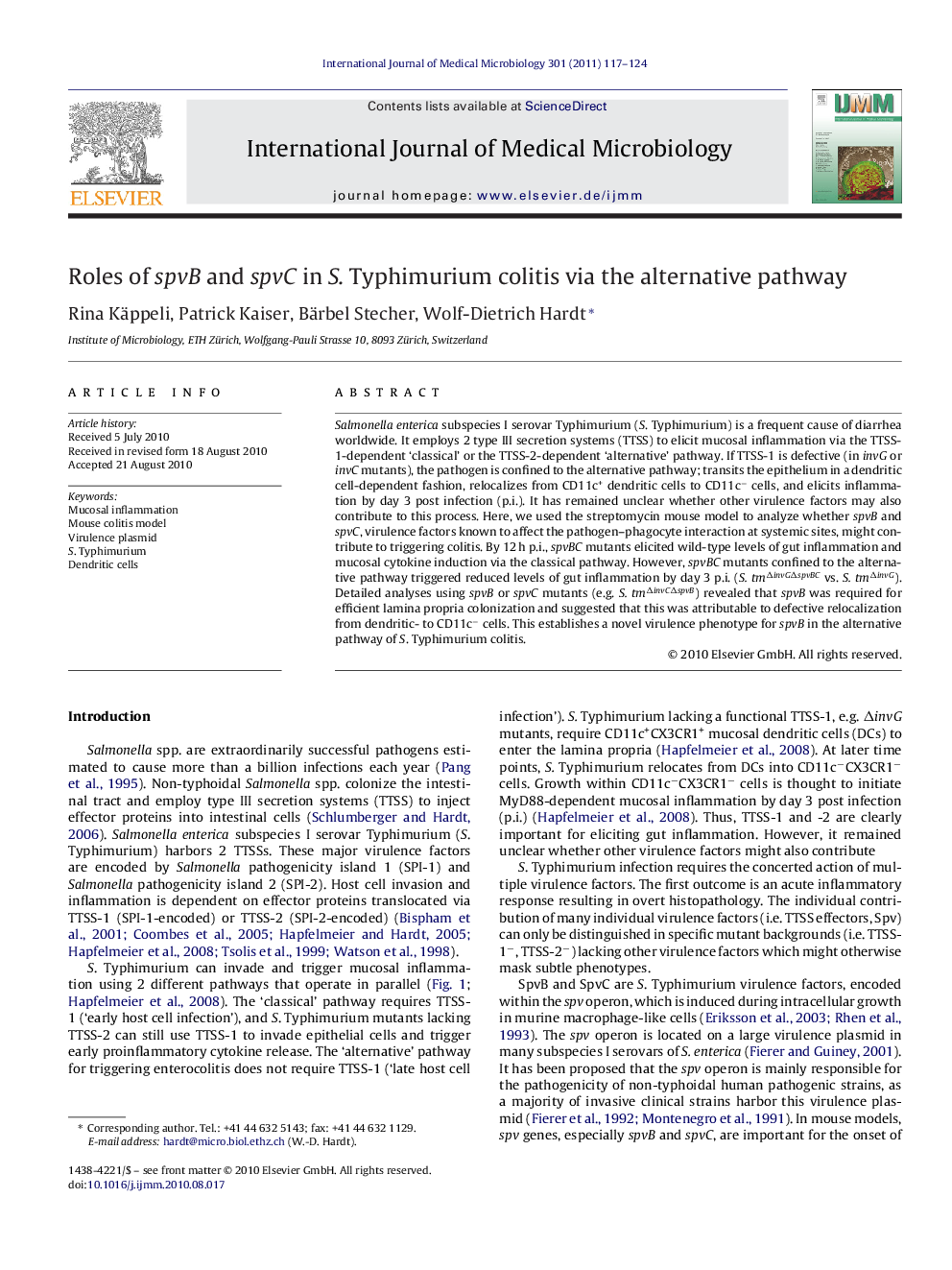| Article ID | Journal | Published Year | Pages | File Type |
|---|---|---|---|---|
| 2054335 | International Journal of Medical Microbiology | 2011 | 8 Pages |
Salmonella enterica subspecies I serovar Typhimurium (S. Typhimurium) is a frequent cause of diarrhea worldwide. It employs 2 type III secretion systems (TTSS) to elicit mucosal inflammation via the TTSS-1-dependent ‘classical’ or the TTSS-2-dependent ‘alternative’ pathway. If TTSS-1 is defective (in invG or invC mutants), the pathogen is confined to the alternative pathway; transits the epithelium in a dendritic cell-dependent fashion, relocalizes from CD11c+ dendritic cells to CD11c− cells, and elicits inflammation by day 3 post infection (p.i.). It has remained unclear whether other virulence factors may also contribute to this process. Here, we used the streptomycin mouse model to analyze whether spvB and spvC, virulence factors known to affect the pathogen–phagocyte interaction at systemic sites, might contribute to triggering colitis. By 12 h p.i., spvBC mutants elicited wild-type levels of gut inflammation and mucosal cytokine induction via the classical pathway. However, spvBC mutants confined to the alternative pathway triggered reduced levels of gut inflammation by day 3 p.i. (S. tmΔinvGΔspvBC vs. S. tmΔinvG). Detailed analyses using spvB or spvC mutants (e.g. S. tmΔinvCΔspvB) revealed that spvB was required for efficient lamina propria colonization and suggested that this was attributable to defective relocalization from dendritic- to CD11c− cells. This establishes a novel virulence phenotype for spvB in the alternative pathway of S. Typhimurium colitis.
